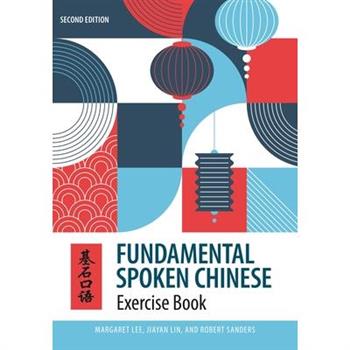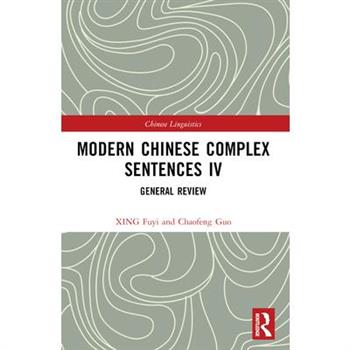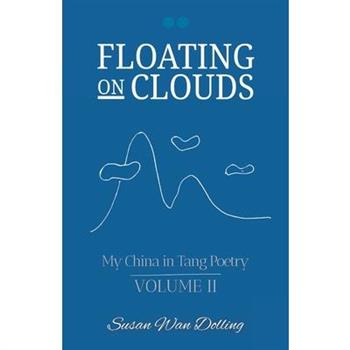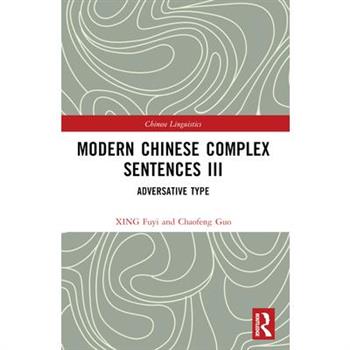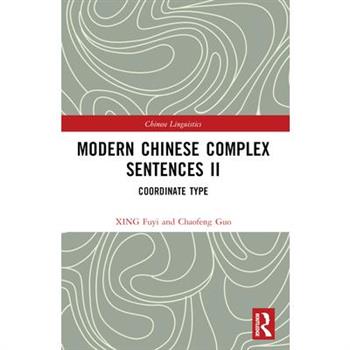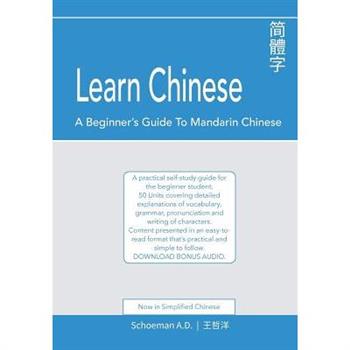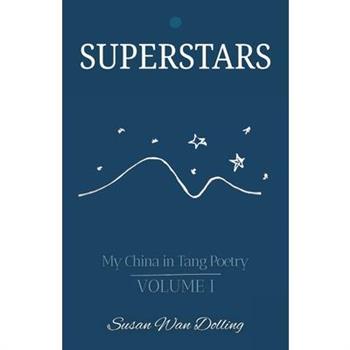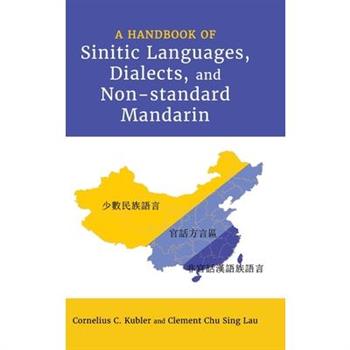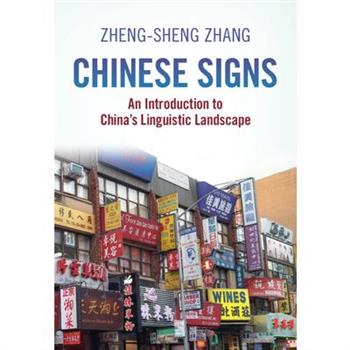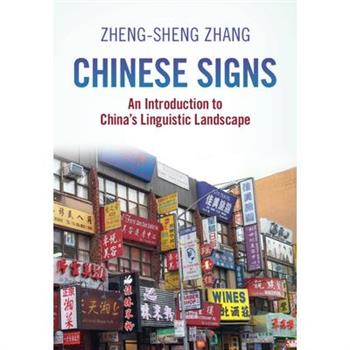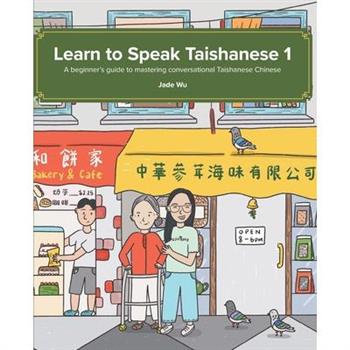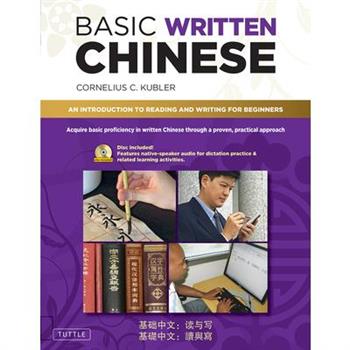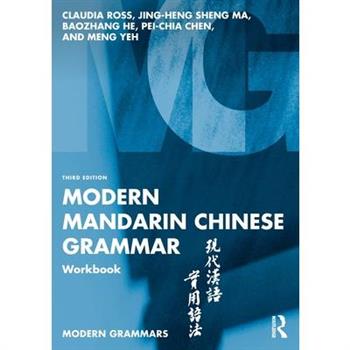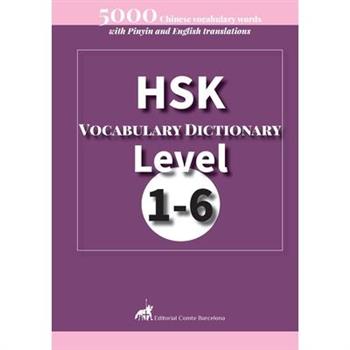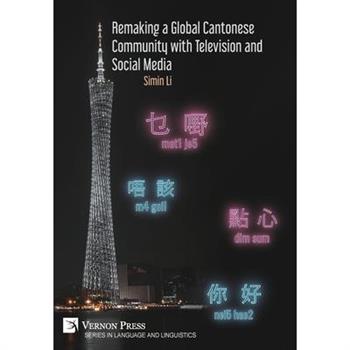Fundamental Spoken Chinese
Like its predecessor, the second edition of Fundamental Spoken Chinese places primary importance on providing a clear, systematic, and graduated introduction to the basic grammar and vocabulary of spoken Mandarin Chinese through chapters that center on identified sentence patterns and vocabulary items rather than particular social functions or daily activities. The authors continue the tradition of separating the teaching of oral and written skills, leaving the instruction of reading and writing in Chinese characters exclusively to the accompanying Fundamental Written Chinese, also in its second edition. The lessons in the two textbooks, however, are keyed to each other in terms of vocabulary and grammar, so they may be used simultaneously, or the parallel written skills may be introduced at a later time. Both textbooks were developed for learning in the classroom and for independent study. The exercise book contains a wide variety of exercises and activities specifically designed to reinforce a systematic progression of spoken Chinese that focuses on developing accuracy then fluency in conversations. Audio, exercise model answers, and other resources for Fundamental Spoken Chinese may be accessed at www.fundamentalchinese.com.
The Journey to the West
Sun Wukong is one of the most famous characters in Chinese literature and culture. His legendary bravery, his foolish mistakes, his sharp-tongued commentary and his yearning for immortality and spiritual knowledge have inspired hundreds of books, television shows, graphic novels, video games and films.The full story of Sun Wukong's adventures is told in Journey to the West, an epic 2,000-page novel written in the 16th century by Wu Cheng'en. Journey to the West is probably the most famous and best-loved novel in China and is considered one of the four great classical novels of Chinese literature. Its place in Chinese literature is roughly comparable to Homer's epic poem The Odyssey in Western literature. Wikipedia sums up the book's role perfectly, saying, "Enduringly popular, the tale is at once a comic adventure story, a humorous satire of Chinese bureaucracy, a spring of spiritual insight, and an extended allegory in which the group of pilgrims journeys towards enlightenment by the power and virtue of cooperation."Journey to the West is the ultimate tale of adventure, magic, and myth. It is probably the most famous and best-loved novel in China and is considered one of the four great classical novels of Chinese literature. The original Chinese novel written by Wu Chen'en in the 16th century is over a half million Chinese characters long, and a direct English translation runs over 2,000 pages and has a very large vocabulary.This book is not a literal translation of the original novel. Rather, it's a retelling of the story in easy-to-read Simplified Chinese. Unlike other full-text translations, this is written using a restricted vocabulary, simpler sentence structure, and fewer proper nouns. The chapters start off quite easy and gradually increase in complexity. The authors have made every effort to remain faithful to the original while retelling it in simple language. The book also contains full Pinyin (phonetic spelling) and English versions, and a complete glossary of all Chinese words used. A high quality audiobook version is available on Audible, and standard-quality versions are available on YouTube and the Imagin8 Press website.This edition is a beautiful "coffee table" style hardback book. It's 8.5" x 11", 7 and weighs well over 5 pounds. You can see some pictures of the book's interior here: tinyurl.com/JTWpic1tinyurl.com/JTWpic2tinyurl.com/JTWpic4tinyurl.com/JTWpic6
Dialect, Voice, and Identity in Chinese Translation
Dialect, Voice, and Identity in Chinese Translation is the first book-length attempt to undertake a descriptive investigation of how dialect in British and American novels and dramas is translated into Chinese. Dialect plays an essential role in creating a voice of difference for the regional, social, or ethnic Others in English fiction. Translating dialect involves not only the textual representation of a different voice with target linguistic resources but also the reconstruction of various cultural, social, and ethnic identities and relations on the target side. This book provides a descriptive study of 277 Chinese translations published from 1931 to 2020 for three fictions - The Adventures of Huckleberry Finn, Tess of the d'Urbervilles, and Pygmalion - with a special focus on how the Dorset dialect, African American Vernacular English, and cockney in them have been translated in the past century in China. It provides a comprehensive description of the techniques, strategies, tendencies, norms, and universals as well as diachronic changes and stylistic evolutions of the language used in dialect translation into Chinese. An interdisciplinary perspective is adopted to conduct three case studies of each fiction to explore the negotiation, reformulation, and reconstruction via dialect translation of the identities for Others and Us and their relations in the Chinese context. This book is intended to act as a useful reference for scholars, teachers, translators, and graduate students from disciplines such as translation, sociolinguistics, literary and cultural studies, and anyone who shows interest in dialect translation, the translation of American and British literature, Chinese language and literature, identity studies, and cross-cultural studies.
The Last King of Shang, Book 5
This is the 5th book, in Chinese, pinyin and English, of the Last King of Shang series by Jeff Pepper and Xiao Hui Wang. Jiang Ziya unites the Zhou rebels and leads them in a series of epic battles as they struggle to overthrow the corrupt Shang dynasty. Facing formidable foes, powerful magic and deadly traps, they find themselves allied with legendary immortals like Laozi, the founder of Daoism. Heaven and earth clash, and the fate of the human world hangs in the balance.This book, the fifth in the series, is based on chapters 68 through 84 of the legendary Chinese novel The Investiture of the Gods. It is a compelling tale of honor, ambition, and divine struggles, with rich storytelling and vivid imagery. This high-stakes saga explores the clash between gods and humans, and the painful dilemmas of those who must choose between loyalty to the king and their own honor.Jeff Pepper and Xiao Hui Wang have retold this epic story to make it accessible to Chinese readers of all levels, using a limited vocabulary, simpler sentences, and fewer proper nouns. Each page of Simplified Chinese is also shown in phonetic pinyin. Words not included in the HSK4 list of commonly used words are defined where they first appear. A full English translation and glossary are included in the back of the book. A free audiobook is available on YouTube.Jeff Pepper and Xiao Hui Wang are co-authors of dozens of popular books for English-speaking people learning Chinese language and culture, including the 31-volume Journey to the West series, and innovative translations of the Dao De Jing, Art of War, and San Zi Jing. Their books are available at www.imagin8press.com and from most online booksellers.======================A Guide to Different Editions=======================The Last King of Shang books are available in several different formats, depending on what you're looking for. They are listed below. You can also visit www.imagin8press.com, where you will find purchase links for all the books listed here.The Last King of Shang -- in EnglishAvailable in: paperback and ebookThe Last King of Shang -- in Simplified ChineseAvailable in: paperback and ebookThe Last King of Shang -- in Simplified Chinese, pinyin and EnglishAvailable in: oversized hardcover ("coffee table" size) and ebookThe Last King of Shang -- audiobook - in spoken ChineseAvailable in: audiobookA series of 6 individual paperbacks, in Simplified Chinese, pinyin and EnglishAvailable in: paperback and ebook
The Last King of Shang, Book 6
This is the 6th book, in Chinese, pinyin and English, of the Last King of Shang series by Jeff Pepper and Xiao Hui Wang. The fox demon Daji leads the King of Shang deeper into madness and depravity. Meanwhile, the Zhou army, led by Jiang Ziya, grows ever stronger as the nation's nobles join their cause. The army approaches the capital city of Zhaoge, but the Shang king still has powerful allies in heaven and earth, and both sides clash in fierce battles. Amid shifting alliances and supernatural duels, the Zhou army enters the royal palace. Prophecies are fulfilled, and hundreds of new gods take their places in the heavens.This book, the last in the series, is based on chapters 85 through 100 of the legendary Chinese novel The Investiture of the Gods. It is a compelling tale of honor, ambition, and divine struggles, with rich storytelling and vivid imagery. This high-stakes saga explores the clash between gods and humans, and the painful dilemmas of those who must choose between loyalty to the king and their own honor.Jeff Pepper and Xiao Hui Wang have retold this epic story to make it accessible to Chinese readers of all levels, using a limited vocabulary, simpler sentences, and fewer proper nouns. Each page of Simplified Chinese is also shown in phonetic pinyin. Words not included in the HSK4 list of commonly used words are defined where they first appear. A full English translation and glossary are included in the back of the book. A free audiobook is available on YouTube.======================A Guide to Different Editions=======================The Last King of Shang books are available in several different formats, depending on what you're looking for. They are listed below. You can also visit www.imagin8press.com, where you will find purchase links for all the books listed here.The Last King of Shang -- in EnglishAvailable in: paperback and ebookThe Last King of Shang -- in Simplified ChineseAvailable in: paperback and ebookThe Last King of Shang -- in Simplified Chinese, pinyin and EnglishAvailable in: oversized hardcover ("coffee table" size) and ebookThe Last King of Shang -- audiobook - in spoken ChineseAvailable in: audiobookA series of 6 individual paperbacks, in Simplified Chinese, pinyin and EnglishAvailable in: paperback and ebook
Chinese Conversations for Beginners
Are you a Beginner Mandarin Learner looking to improve your spoken Chinese in the most effective way possible? If your answer is YES - this book is for you!Learn Chinese with stories - The book is designed to immerse you in realistic daily conversations in modern China through short stories: Learn to speak like a Chinese nativeResolve daily conversational tasksBuild up your vocabulary with up-to-date words and phrasesExplore modern China through fun short storiesGain powerful insights into Chinese cultureThis book consists of 30 conversational dialogues for beginner students, following a consistent storyline in modern China. The conversations cover practical topics for daily use, including introducing yourself and others, asking friends out, ordering a meal in a restaurant, ordering a taxi, checking in to a hotel, talking to a doctor, opening a bank account, renting an apartment, celebrating Chinese New Year, and many more.Master Spoken Chinese with Ease! Learn and enjoy with: Bilingual version of each dialogue with Chinese (including Pinyin) and EnglishChinese-only version of dialogues to encourage learning progressionKey words and phrases highlighted in Chinese and English to ease your learningLearning tips and culture corner to enhance your understanding and insightKey vocabulary list to review and guide your learningFREE audio, recorded by native speakers, to help with your listening and speakingBe bold, dream big, and believe in yourself!
诗之光
The Morning Glow, a collection of selected poems by some minor poets in contemporary China, is the seventh book edition of the Muse of Light series in both Chinese and English. The translation and publication of these poems are intended to bring the minor poets and their poetry into the sight of the world so that more people may learn that there are many other poets in China today committed to poetry writing besides those better-known poets whose poems are more often translated and introduced to the world. By "minor poets," we mean they are less known to the world, but they nevertheless represent the many poets in today's China who are digging their way to prominence in poetry writing. The Morning Glow, together with other editions of the Muse of Light series, not only provides more people outside China with the chance to appreciate the charm of Chinese poetry but also opens a window for the rest of the world to learn more about China and its people.
Modern Chinese Complex Sentences IV
This book is the final volume of a four-volume set on modern Chinese complex sentences, assessing the key attributes, related sentence structures, and semantic and pragmatic relevance of complex sentences.Complex sentences in modern Chinese are unique in formation and meaning. Following on from analysis on coordinate, causal and adversative types of complex sentences, the ten chapters in this volume review the characteristics of complex sentences as a whole. The author discusses the constituents, related structures, semantic and pragmatic aspects of complex sentences, covering topics such as the constraints and counter-constraints between sentence forms and semantic relationships, six type-crossover markers, distinctions between simple sentences and complex sentences, clauses formed by a noun/nominal phrase followed by le, the shǐ-structure, subject ellipsis or tacit understanding of clauses, as well as double-subject sentences, alternative question groups and their relationships with complex sentences.The book will be a useful reference for scholars and learners interested in Chinese grammar and language information processing.
The Chinese Rhyme Tables
As the first volume of a two-volume set that studies Chinese rhyme tables, this book focuses on their emergence, development, structure, and patterns.
Floating on Clouds
My China in Tang Poetry is a personal celebration of the genius of the Golden Age of Chinese poetry. Susan Wan Dolling, writer, teacher and storyteller provides a feast of new translations and readings of the poetry with consummate knowledge, understanding and an enthusiasm that is infectious. In her telling, these stories and poems are not archaic or hard, but engaging and alive.Volume Two, Floating on Clouds, gives us two men described as recluses, Meng Haoran and Wang Wei, and the so-called "Four Female Talents of the Tang Era", Li Ye, Xue Tao, Liu Caicun and Yu Xuanji.
The Routledge Handbook of Chinese Studies
This handbook approaches Chinese Studies from an interdisciplinary perspective while attempting to establish a fundamental set of core values and tenets for the subject, in relation to the further development of Chinese Studies as an academic discipline.
Let's Speak Chinese
This book is for those with experience learning Mandarin but who need confidence interacting in everyday situations. What distinguishes Let's Speak Chinese! from other language acquisition guides is the emphasis on practical usage and the promotion of self-learning. There are eight chapters based on common themes, each illustrating typical dialogue: Shopping, Food & Drink, Asking for Help, Personal Information & Daily Conversation, Family & Relationships, Travel, In the Classroom, and Time & Seasons. This latest edition features more activities and resources. Now, dive in!
Modern Chinese Complex Sentences III
This book is the third volume of a four-volume set on modern Chinese complex sentences, with a focus on adversative complex sentences and relevant forms.
Modern Chinese Complex Sentences II
This book is the second volume of a four-volume set on modern Chinese complex sentences, with a focus on coordinate complex sentences and relevant forms.
The Language of Nation-State Building in Late Qing China
The Language of Nation-State Building in Late Qing China investigates the linguistic and intellectual roots of China's modern transformation by presenting a systematic study of the interplay between language innovation and socio-political upheavals in the final decade of the Qing Empire.
A Hybrid Approach to Teaching Chinese Through Digital Humanities, Call, and Project-Based Learning
A Hybrid Approach to Teaching Chinese through Digital Humanities, CALL, and Project-Based Learning presents an exposition of current thinking, research, and best practices in Computer-Assisted Language Learning (CALL), Digital Humanities (DH), and Project-Based Language Learning (PBLL) in the context of teaching Chinese as a foreign language (TCFL).It proposes integrating CALL and DH into PBLL to form a Digital Humanities-Augmented Technology-Enhanced Project-Based Language Learning (DATEPBLL) approach to transform student learning. By combining DH pedagogy and CALL technology with PBLL, the approach takes advantage of their synergies, which enables instructors to help students develop linguistic and cultural competency as well as 21st century skills. Case studies and best practices from experienced Chinese language teachers are presented to demonstrate the value of the DATEPBLL approach. This is the first volume that covers all three fields and makes a strong case for the importance of incorporating CALL, DH, and PBLL for effective language learning.Written for professionals in language education, including educators, curriculum designers and developers, graduate students, publishers, government personnel, and researchers, the book provides theoretical insights and practical applications of CALL, DH, and PBLL.
诗之光
Poems are among the most brilliant innovations of us as humans, a gift inexorably rooted in every bit of our life experiences since we were born. We write poems, we read poems, we spread poems, and we derive great varieties of feelings and thoughts from connecting ourselves to poems. Poems are never the privilege of the few; instead, they are the crystallization of the wisdom of all. This collection of poems, with the title of Muse of Light(诗之光), is a typical example of how the significance and value of poems can be seen in the sheer and incessant endeavor of some promising poets who, for the time being, may not be remarkably influential. Such poems, either showing pioneering styles of language use, characterized by experimental probes into mental states, or featuring in-depth reflections on the meaning of life, are manifestations of how the poets have been constructing and reconstructing their own identities as the ones to depict, demonstrate, and decipher what poems mean to who they are.The poems selected in this book were all posted on the Wechat platform of Muse of Light and listed in the same order as they were released online. During the translating process, Professor Wu Yongqiang, Dean of the School of Foreign Languages and Literatures of SMU, has provided indispensable support both intellectually and psychologically. The phrase "thank you" is indeed insufficient to express the translators' gratitude for what Ms. Leng Tong and Professor Wu Yongqiang have done for the translation of such beautiful poems.
Life on the Yangtze River
This is a unique collection of works. It is "unique" because it vividly captures the journey of a boat, a family, and a region over nearly a century. Most Chinese people are familiar with the Tang-dynasty poet Zhang Ruoxu's poem, "Spring River in the Flower Moon Night." The setting of this work is the very region where Zhang Ruoxu once found inspiration by the waterside - the intricate waterways of Yangzhou, where the Grand Canal meets the Yangtze River. These essays not only paint a picture of the picturesque scenes we associate with the famous line from Zhang Ruoxu's poem, "In spring the river rises to meet the sea, the bright moon rises with the tide," but also delve into a life of daring on the water, battling fierce winds and waves, and the heart-pounding adventures of those living on the edge, as the saying goes: "Those who live on boats or ride horses are always tempting fate." Likewise, many are familiar with the Beijing opera A Fisherman Kills a Family, and the line, "Early in the morning, crows call as the firewood door is opened." These words call to mind the plight of boatmen from a millennium ago, of their chivalrous deeds, of Xiao En and his daughter Xiao Guiying. Ms. Jiang Xiaping's book Life on the Yangtze River can be characterized as a contemporary Xiao Guiying's symphony of praise for today's Xiao En. She paints a vivid portrait of her father, Jiang Wenlong, known as "the River-Crossing Dragon," a man of honor and bravery, revolutionary in spirit, possessing strict family values - a reincarnation of Xiao En, a hero of the Yangzhou's waterways.
Chinese Folktales for Language Learners
A collection of 15 classic Chinese folk stories--passed down from generation to generation--presented in both Chinese and English. Welcome to the fascinating world of Chinese folklore. The fifteen stories in this book address universal concerns such as the origins of humankind, the impact of wars and natural disasters, the great deeds of cultural heroes, the struggle for dignity and justice for the common man, and the yearnings of the human heart. For readers from around the world, this book is a window to some of the historical and cultural facets of China that remain relevant today. These stories can be enjoyed in English by readers with no knowledge of Chinese, while the bilingual format and vocabulary lists are an added bonus for language students. Each story is given in parallel Chinese and English versions, and is accompanied by a short essay about its historical context, a vocabulary list, discussion questions, and native speaker audio recordings. Enjoy fifteen classic Chinese folk tales, including: "Taming the New Year's Beast" -- How the Lunar New Year festival came about, celebrated after the ferocious monster Nian was frightened off by sparks, explosive noises and the color red when it came hunting for children and animals."Two Virtuous Mothers of Ancient China" -- The true story of two widowed mothers who raised their sons to become great men. One used gentle persuasion; the other used strict discipline. It is left to the reader to decide which method is the more effective."The Chinese Romeo and Juliet" -- A classic tale of tragic love, Zhu Yingtai, the beloved daughter of a local official, is disguised as a young male scholar to study in Hangzhou -- some distance away from her home. While she was in the academy she met a soulmate, Liang Shanbo, and as they studied together for three years, she developed feelings for him... "Judge Bao Takes On the Emperor's Son-in-Law" -- The famous Judge Bao decided to right a wrong when the emperor's son-in-law, Chen Shimei, committed bigamy by pretending to be single in order to become the imperial son-in-law. He even attempted to hide this crime by obliterating his wife and two children, but was thwarted by Judge Bao, who risked his own life and career to carry out justice.
春风夏雨(Spring Breeze and Summer Rain, Bilingual Edition)
范媛是一个年轻貌美且十分善良的女孩,她的善举影响着身边的人,其言其行传递着爱心与温暖。春风化雨,润物无声。 大学毕业后,和闺蜜的哥哥结婚生子,过着让人羡慕的幸福生活。然而,天有不测风云。在她双胞胎儿女三岁生日的那一天,突如其来的致命打击,犹如晴天霹雳。她倒下了,她的世界崩塌了。 接下来,她会从生命中不可承受之痛解脱出来吗?她会从意外的、毁灭性的打击中重新找回自己吗?Tiffany is a young, beautiful, and very kindhearted girl. Her kind deeds affect the people around her, and her words and benevolent deeds convey warmth and love. The warm spring winds and the summer rain is moist enough to nourish all things. After graduating from college, she married her best friend's brother, had children, and lived an enviable and happy life. However, the heavenly skies are unpredictable. On the day of her twins' third birthday, the sudden fatal blow was like a thunderbolt from the sky. She fell, and her world collapsed.From here, will she be freed from life's unbearable pain? Will she rediscover herself from that unexpected, devastating blow?
The Last King of Shang, Book 4
This is the 4th book, in Chinese, pinyin and English, of the Last King of Shang series by Jeff Pepper and Xiao Hui Wang. The corrupt king of Shang continues his siege of West Qi City. His forces camp outside the city gates and send powerful generals and terrifying sorcerers into battle. All are defeated by the rebel Zhou army led by Jiang Ziya. But then the two sons of the king arrive, tricked by a devious magician into fighting on their evil father's side.This book, the fourth in the series, is based on chapters 51 through 67 of the legendary Chinese novel The Investiture of the Gods. It is a compelling tale of honor, ambition, and divine struggles, with rich storytelling and vivid imagery. This high-stakes saga explores the clash between gods and humans, and the painful dilemmas of those who must choose between loyalty to the king and their own honor.Jeff Pepper and Xiao Hui Wang have retold this epic story to make it accessible to Chinese readers of all levels, using a limited vocabulary, simpler sentences, and fewer proper nouns. Each page of Simplified Chinese is also shown in phonetic pinyin. Words not included in the HSK4 list of commonly used words are defined where they first appear. A full English translation and glossary are included in the back of the book. A free audiobook is available on YouTube.Jeff Pepper and Xiao Hui Wang are co-authors of dozens of popular books for English-speaking people learning Chinese language and culture, including the 31-volume Journey to the West series, and innovative translations of the Dao De Jing, Art of War, and San Zi Jing. Their books are available at www.imagin8press.com and from most online booksellers.======================A Guide to Different Editions=======================The Last King of Shang books are available in several different formats, depending on what you're looking for. They are listed below. You can also visit www.imagin8press.com, where you will find purchase links for all the books listed here.The Last King of Shang -- in EnglishAvailable in: paperback and ebookThe Last King of Shang -- in Simplified ChineseAvailable in: paperback and ebookThe Last King of Shang -- in Simplified Chinese, pinyin and EnglishAvailable in: oversized hardcover ("coffee table" size) and ebookThe Last King of Shang -- audiobook - in spoken ChineseAvailable in: audiobookA series of 6 individual paperbacks, in Simplified Chinese, pinyin and EnglishAvailable in: paperback and ebook
The Last King of Shang, Book 3
This is the 3rd book, in Chinese, pinyin and English, of the Last King of Shang series by Jeff Pepper and Xiao Hui Wang. In the waning days of the Shang dynasty in ancient China, an epic battle begins between forces loyal to the corrupt Shang king and the rebels of West Qi. The leader of the Shang army, Grand Tutor Wen, desperately recruits a host of demons, immortals and Daoist magicians to his side. They build ten magic traps to ensnare the West Qi rebels. But the legendary Jiang Ziya, aided by Nezha and the immortals of Mount Kunlun, use deception, magic and raw strength to disable the traps and lead a counterattack against the king's forces.This book, the third in the series, is based on chapters 35 through 50 of The Investiture of the Gods. It is a compelling tale of honor, ambition, and divine struggles, with rich storytelling and vivid imagery. This high-stakes saga explores the clash between gods and humans, and the trials of those who must choose between loyalty to the king and their own honor.Best-selling authors Jeff Pepper and Xiao Hui Wang have retold this epic story to make it accessible to Chinese readers of all levels, using a limited vocabulary, simpler sentences, and fewer proper nouns. Each page of Simplified Chinese is also shown in phonetic pinyin. Words not included in the HSK4 list of commonly used words are defined where they first appear. A full English translation and glossary are included in the back of the book. A free audiobook is available on YouTube.Jeff Pepper and Xiao Hui Wang are co-authors of dozens of popular books for English-speaking people learning Chinese language and culture, including the 31-volume Journey to the West series, and innovative translations of the Dao De Jing, Art of War, and San Zi Jing. Their books are available at www.imagin8press.com and from most online booksellers.e wa======================A Guide to Different Editions=======================The Last King of Shang books are available in several different formats, depending on what you're looking for. They are listed below. You can also visit www.imagin8press.com, where you will find purchase links for all the books listed here.The Last King of Shang -- in EnglishAvailable in: paperback and ebookThe Last King of Shang -- in Simplified ChineseAvailable in: paperback and ebookThe Last King of Shang -- in Simplified Chinese, pinyin and EnglishAvailable in: oversized hardcover ("coffee table" size) and ebookThe Last King of Shang -- audiobook - in spoken ChineseAvailable in: audiobookA series of 6 individual paperbacks, in Simplified Chinese, pinyin and EnglishAvailable in: paperback and ebookning
A Brief History of the Chinese Language III
As the third volume of a multivolume set on Chinese phonetics, this book examines the phonetical system of Modern Chinese and phonetical changes from Middle Chinese to Modern Chinese.Chinese language history is generally split into three phases: (1) Old Chinese, the form of the Chinese language spoken between the 18th century BCE and the 3rd century CE, (2) Middle Chinese, between the 4th century CE to around the 12th century CE, and (3) Modern Chinese, since the 13th century. This volume studies the phonetical systems of Modern Chinese, including the initials system, vowel final system, nasal final system, entering final system, and tonal system. The author discusses the distinct change of these systems from the period of Middle Chinese to that of Modern Chinese and studies the formation of the standard pronunciation of the common language of the modern Han nation.This comprehensive groundwork on Chinese phonetical history will be a must read for scholars and student studying Chinese language, linguistics, and especially for beginning learners of Modern Chinese phonetics.
A Brief History of the Chinese Language II
As the second volume of a multivolume set on Chinese phonetics, this book examines the phonetical systems of Middle Chinese and phonetical changes from Old Chinese to Middle Chinese.Chinese language history is generally split into three phases: (1) Old Chinese, the form of the Chinese language spoken between the 18th century BCE and the 3rd century CE; (2) Middle Chinese, between the 4th century CE to around the 12th century CE; and (3) Modern Chinese, since the 13th century. This volume studies the phonological system of Middle Chinese, including the initials system, finals system, and tonal system, examining the evolution of these systems from the period of Old Chinese to that of Middle Chinese.This comprehensive groundwork on Chinese phonetical history will be a must read for scholars and students studying Chinese language, linguistics and, especially, for beginning learners of Middle Chinese phonetics.
A Brief History of the Chinese Language I
As the first volume of a multivolume set on Chinese phonetics, this book gives a full picture of the historical development of the Chinese language and studies the phonetics of the early form of Chinese, that is, Old Chinese.Chinese language history is generally split into three phases: (1) Old Chinese, the form of the Chinese language spoken between the 18th century BCE and the 3rd century CE; (2) Middle Chinese, between the 4th century CE to around the 12th century CE; and (3) Modern Chinese, since the 13th century. In this volume, the author first introduces basic issues in Chinese language study, including research objectives, methodology, existing scholarship, periodization, and the distinctive linguistic characteristics of each period. The core chapters then describe and analyze the phonetical systems of Old Chinese, covering the initials system and related eight aspects, two types of rhyme groups, ancient finals, and the tonal system.This comprehensive groundwork on Chinese phonetical history will be a must read for scholars and students studying Chinese language, linguistics and especially for those wishing to become acquainted with Old Chinese phonetics.
Superstars
The Tang Dynasty (618 to 907 AD) is considered to be China's Golden Age of Poetry, and My China in Tang Poetry is a personal celebration of the genius of the Tang poets by writer, teacher and translator Susan Wan Dolling. She provides a feast of new translations of the poems, accompanying them with explanations of the meaning and context of each with an unparalleled depth of knowledge and understanding, as well as an enthusiasm that is infectious. To her, the poems are not only the epitome of culture and art, but also a store of stories and images that remains relevant today.Volume One, Superstars, selections from the two giants of Tang poetry, Li Bai, aka Li Po, and Du Fu, aka Tu Fu. These new translations of their poems are arranged thematically, with historical background, allusions, and this translator's readings imbedded into the stories they tell.
Mulan, Woman Warrior
The story of Mulan, the young girl who joins the army to save her family and her country, is at least 1500 years old. Over the centuries, it has inspired dozens of poems, plays, novels, songs, and more recently, graphic novels, TV shows and films. The details of the story vary, but the core is always the same: a young girl living with her family in a small Chinese village learns that the army requires each family to contribute one man to fight invaders from the North. To save her elderly father she disguises herself as a young man and enlists in the army; she excels at fighting, strategy and leadership and rises through the ranks; the war ends successfully; she is recognized as a hero and is offered rewards by the Emperor; she declines the rewards and humbly chooses to return to her family and take up the traditional life of a village woman.This wonderful little book consists of just 30 six-line verses, and lets beginning students enjoy a great story while also learning to read Simplified Chinese. It uses a minimal vocabulary of just 233 words, using fewer than 300 different characters. Proper nouns are underlined, and new words that are not in the HSK3 standard vocabulary are defined on the page where they first appear. Each page of Chinese also contains a pinyin (romanized spelling) version. This gives an assist to beginning readers by letting them sound out the words instead of having to recognize each character in the main text. The pinyin is also useful for looking up word definitions in the glossary. There is an English translation at the end, and a free audiobook is available on the YouTube Imagin8 Press channel and on www.imagin8press.com.Jeff Pepper is President and CEO of Imagin8 Press, and has written dozens of books about Chinese language and culture. Over his thirty-five year career he has founded and led several successful computer software firms, including one that became a publicly traded company. He's authored two software related books and was awarded three U.S. software patents.
Learn Chinese Radicals
This is a book to practice the 214 standard Chinese radicals in.In This Book You Will Find: Material for students new to the writing and reading of Chinese characters.A list of the 214 standard Chinese radicals and their variants in both Traditional and Simplified Chinese characters.A page spread that consists of 12 radicals provided in the left column, and 16 writing boxes per row to practice in.Each radical can be written 16 times, across two pages.Blank pages provided for copying.Every radical is provided with its: Pinyin pronunciationMeaning in EnglishNumber of strokesThe list provided is 100% correct, but Chinese radical lists found online can vary due to several factors: Historical Variations: Throughout history, there have been different categorizations and interpretations of radicals, leading to variations in radical lists.Simplification and Standardization: The Chinese writing system has undergone reforms, such as simplification in mainland China and traditional forms in Taiwan and Hong Kong. These reforms may result in different radical lists being used in different regions.Scholarly Interpretations: Different scholars may have different perspectives on which components should be considered radicals, leading to variations in radical lists.Educational Curriculum: Radical lists used in educational materials may be tailored to suit the specific needs of learners or the requirements of the curriculum, resulting in variations.Usage and Frequency: Some lists may prioritize radicals based on their frequency of use or importance in understanding characters, leading to variations depending on the purpose of the list.Overall, the variation in Chinese radical lists reflects the complexity and richness of the Chinese writing system, as well as the diverse perspectives and needs of learners and users.Radicals serve as headers in dictionaries, organizing characters or words. The 214 Kangxi radicals specifically categorize entries in the Kangxi dictionary; they are not universally employed in other dictionaries, unless another dictionary deliberately adopts the same radical set. Consequently, if a smaller dictionary opts not to include some obscure characters found in larger or more comprehensive dictionaries, it may lack the complete set of Kangxi radicals.The Kangxi dictionary, being Traditional Chinese, uses its distinct set of radicals, which differs from those used in Simplified Chinese dictionaries. However, entries in Simplified Chinese dictionaries may still be rooted in the Kangxi dictionary.Radicals, whether Kangxi or otherwise, are essentially arbitrary. They often bear little relation to a character's meaning or pronunciation. Therefore, it's entirely acceptable for a new dictionary publisher to devise their own radical system for character grouping.
Embodied Books
竄We often speak of the body of text, and Darian Goldin Stahl's excellent and timely book deals with sister-inspired texts of the body. Stahl makes the case, beautifully and powerfully, for the value of artists' books to open us up (like a laparotomy) to illness experience.罈 (Paul Crawford, Professor of Health Humanities, University of Nottingham, UK) This book investigates how handmade artists' books excite the senses to communicate lived experiences of illness and disability. The combination of text, image, materials, and form, along with the gesture of turning pages, make artists' books a powerful source of expressive potential. These works of art not only enable patients to create meaning from their medical experiences, but also invite healthcare learners to an uncensored read of critiques on Western medicine. Artists' books are increasingly popular among medical institutions in an age of digital screens because of their intimate handheld, multi-sensory expressions of bodily phenomena that may be difficult or impossible to communicate through words alone. By applying a phenomenological practice of sensing and meaning-making, the author provides step-by-step instructions for creating new artists' books as part of health humanities pedagogies. In this way, Embodied Books serves as a philosophical and pragmatic example of why and how experiencing artists' books in healthcare contexts is so important.
The Perception and Acquisition of Chinese Polysemy
Polysemous lexical items have multiple senses associated with a single form, and these senses are interrelated. Polysemy is a universal and omnipresent phenomenon, providing a robust tool to convey creatively our ideas and thoughts. As a result, polysemy presents challenges for second language (L2) learners. Existing studies on the issue of polysemy in language acquisition often rely on researchers' subjective understandings of the network of meanings around a lexical item or focus on English examples. Yet Chinese lexis exhibits greater polysemy than English and deserves its own examination. This book takes one Chinese polysemous item as an example to explore how native (L1) speakers and L2 learners perceive its multiple senses as well as how these senses are acquired by L2 learners. This book also investigates the predictive strengths of various factors that contribute to the acquisition pattern. A multidisciplinary approach is adopted to achieve these objectives, including methods from cognitive linguistics, psycholinguistics, and corpus linguistics.
Chinese Signs
Highlighting stylistic and rhetorical characteristics, this fully illustrated book explores the written form of Mandarin Chinese in a range of everyday settings. Taking examples from Chinese public writing across a variety of textual genres, such as signs, banners and advertisements, it prepares students for navigating 'real world' Chinese, not only in terms of its linguistic and stylistic characteristics, but also its social and cultural context. Drawing over 500 pictorial examples from the linguistic landscape, it explores the signs from a variety of perspectives, for example by highlighting elements of classical Chinese that are still used in the modern language, showing the most popular rhetorical patterns used in Chinese, and presenting the interactions between both Standard Mandarin and dialect, and Chinese and other languages. Detailed annotations are provided for all signs, in both Chinese and English, to accommodate readers of all proficiency levels in Chinese.
Transforming Hanzi Pedagogy in the Digital Age: Theory, Research, and Practice
Transforming Hanzi Pedagogy in the Digital Age 电写时代的汉字教学 brings together expert researchers and practitioners to offer a coherent theoretical, empirical, pedagogical, and experiential justification for a shift in pedagogical focus from handwriting to e-writing in L2 Chinese pedagogy.This volume argues for a pedagogy based on the 21st century communicative needs of L2 Chinese users, grounded in empirical research as well as practical and lived experiences. The authors propose an "e-writing as primary" (电写为主,手写为辅) framework for L2 Chinese instruction in the 21st century, a transformational proposal which will fundamentally shift the pedagogical focus of L2 Chinese instruction globally towards more learner-centered, research-informed practice. This volume includes three theoretical foundation chapters, four empirical studies, three descriptions of program-level implementation, and ten expert L2 Chinese user vignettes, which, taken together, offer a thorough introduction to e-writing for the future of L2 Chinese teaching and learning.This book will be informative for Chinese language instructors, researchers, program directors, materials developers, and advanced graduate students in both CFL and CSL contexts worldwide.
Chinese Signs
Highlighting stylistic and rhetorical characteristics, this fully illustrated book explores the written form of Mandarin Chinese in a range of everyday settings. Taking examples from Chinese public writing across a variety of textual genres, such as signs, banners and advertisements, it prepares students for navigating 'real world' Chinese, not only in terms of its linguistic and stylistic characteristics, but also its social and cultural context. Drawing over 500 pictorial examples from the linguistic landscape, it explores the signs from a variety of perspectives, for example by highlighting elements of classical Chinese that are still used in the modern language, showing the most popular rhetorical patterns used in Chinese, and presenting the interactions between both Standard Mandarin and dialect, and Chinese and other languages. Detailed annotations are provided for all signs, in both Chinese and English, to accommodate readers of all proficiency levels in Chinese.
Learn to Speak Taishanese 1
When is it too late to learn about someone's past? Or even the present?To Amy, a 20-year old college student from San Francisco, life was too busy to wrap her mind around silly questions like this one, until she found out that her grandmother, or Popo in Chinese, was diagnosed with Alzheimer's disease. This memory disorder not only took away Popo's identity, but also her speech abilities, leaving her with the use of only her mother tongue: Taishanese.With Popo's progressive memory loss each day, Amy knew the answer to her question was: tomorrow would be too late. The only way to connect with Popo again was by building a bridge between them. Learning Taishanese was that bridge.In this book, you will join Amy's journey to reconnect with her grandma using Taishanese in San Francisco's Chinatown. From having dim sum to describing her favorite pastimes, Amy will teach you everything you need to know to master basic conversational Taishanese.
The Chance and the Temptation
In addition to the brighter side, there are always obscure and eccentric people and things in a city. This phenomenon is especially true of Los Angeles, the entertainment capital of the world, with beauty and ugliness, opportunities, and temptations. This book narrates stories of the people and events encountered by an Uber driver in Los Angeles. Through this driver's contacts and conversations with various people, this book reveals aspects of the nightlife in the City of Angels, revealing unknown lives in a presentation of human nature at multiple times and places, and at the same time, integrates the author's comparison and analysis of cultural differences between China and the United States. The book has various characters, including teenagers, adults, ordinary citizens, homeless people, and prostitutes. They have incredible stories, significant confrontations, and thought-provoking displays of human nature. Different individuals in each chapter bring out unique stories. These are described and narrated in detail to envision various forms of friendship, morality, and sexual relations. The author does not expose the dark side of life from the perspective of curiosity, nor has he worn tinted glasses to judge absurdity. It explores the diversity of human nature, desire, and the inevitability of their existence by presenting various forms of living and lifestyles. There is always ignorance and evil in society in an era of highly civilized science and technology. Life is full of opportunities, which are bound to be accompanied by temptation. It is real life.
Basic Written Chinese
Move From Complete Beginner Level to Basic Proficiency with this beginning-level course in written Chinese that employs a revolutionary new method designed to have you quickly reading and writing simple, connected Chinese sentences. Along with its sister book Basic Spoken Chinese and their accompanying workbooks, Basic Written Chinese offers a complete introductory course to the written Chinese language. As a native English speaker, working hard to learn Chinese characters is not enough; you have to work smart to learn this very different language efficiently. No matter why you've chosen to learn Chinese--for business, travel, cultural studies or another goal--the Basic Chinese approach of two separate but integrated tracks in spoken and written Chinese will help you learn this language most efficiently and successfully. Basic Written Chinese is designed so it can be used in a class with an instructor or by independent learners working on their own. Basic Written Chinese systematically introduces 288 of the highest frequency characters (in both their simplified and traditional forms) and over 700 common words written with them in context in sentences and a variety of reading passages to help you master basic Chinese reading and writing. This method will greatly improve your abilities to read Chinese and write Chinese The structure of each new character is explained in detail to make the learning of characters easier, and "look-alike" characters are compared and contrasted. Many lessons include character differentiation drills and some lessons include realia such as name cards, street signs, or email messages. Each lesson introduces 6 new characters and a number of words that are written using them. By dividing the leaning into small tasks, you maintain a sense of accomplishment rather than getting bogged down. You'll experience both printed and handwritten forms of characters, as well as several different printed fonts.The accompanying online media kit includes: Over 6 hours of audio by several native Mandarin speakers. Recordings of all reading selections. Recordings of all new characters and new vocabulary.Available separately, Basic Written Chinese Practice Essentials is the companion workbook for Basic Written Chinese. This practical guide includes a broad range of drills and exercises designed to dramatically enhance your proficiency in reading and writing Chinese. While designed for use with the companion textbook, it can be used together with any Chinese textbook or teaching program to hone your Chinese reading and writing language skills. All media content is accessible on the Tuttle Publishing website.
Online Chinese Learning
Online Chinese Learning aims to investigate the types of language learning strategies (LLSs) that online Chinese learners use across asynchronous and synchronous learning environments in different learning contexts.This book examines how the use of language learning strategies by online Chinese learners is influenced by the interactants; the characteristics of the specific learning context; and selected individual learner characteristics. This book will provide: (1) new and detailed information about students' LLS use in online Chinese learning; (2) insights into how individual students adopt LLSs and technological tools to solve learning problems in various learning contexts; (3) an exploration of factors influencing LLS use; and (4) recommendations regarding LLS adoption, use, and training.This book will be a valuable resource for university instructors in languages, language teaching methods, and second language acquisition, as well as researchers in languages, linguistics, and language learning and teaching.
Using Chinese Classics for Intercultural Communicative Competence
Using Chinese Classics for Intercultural Communicative Competence presents new strategies and tools for integrating Mandarin language teaching with fostering intercultural competencies through contemporary, global lenses on Chinese classic texts.Chinese classic texts are canonical works in Chinese culture published before 1911. They offer a window into deeply held cultural values which learners of the Chinese language would benefit from studying to facilitate meaningful intercultural dialogues. With chapters covering classic Chinese texts, such as Journey to the West, Dream of the Red Chamber, and The Romance of the Three Kingdoms, this book will demonstrate the value, importance, and feasibility of teaching Chinese classic works for ICC development in the Chinese world language classroom, and equip teachers with carefully planned, classroom-tested lesson models that demonstrate the innovative, integrative models advocated in this book.This book will be valuable for pre- and in-service Mandarin Chinese teachers across various institutional settings at different levels, looking for ready materials and professional development resources. The book can also be used as core material for teacher training programs.
Modern Mandarin Chinese Grammar Workbook
Modern Mandarin Chinese Grammar Workbook, third edition, is a book of exercises and language tasks to facilitate practice and reinforce language use.
Modern Mandarin Chinese Grammar
Modern Mandarin Chinese Grammar: A Practical Guide, third edition, is an innovative reference guide to Mandarin Chinese, combining traditional and function-based grammar in a single volume.
Chinese Sociolinguistics
Chinese Sociolinguistics examines the ways in which language contributes to shaping social, cultural, and ethnic identities in Greater China. This book is the first textbook to be exclusively devoted to the issues of language, society, and identity in mainland China, Taiwan, Hong Kong, Singapore, and overseas Chinese communities (the Greater China). The book includes topics on the role of language in Chinese culture; the linguistic indexing of socioeconomic class; dialects and regional language variation; the impacts of state policies; linguistic borrowings; bilingualism and bicultural identity; and language shift and attrition. The emergence of new forms of language as influenced by modern technologies and possible future developments is also discussed in this book. This book will appeal to undergraduate and graduate students taking courses in Chinese sociolinguistics, particularly with a focus on language, identity, and society in Greater China. This book will also be of interest to members of the Chinese Language Teachers Association and the American Council of Teaching Foreign Languages (ACTFL).
Languages of Science Between Western and Eastern Civilizations
From the 17th century onwards, in a context of increasingly intense trade and diplomatic contacts, the exchange of scientific ideas became a key element in the encounters between the European world and the cultures of the Far East. This volume investigates the ways in which scientific knowledge was transferred and disseminated to new audiences, whose cultural background was very different from that in which such knowledge had originally developed. A vital role in this process was played by the Jesuit mission in China, whose members included intellectuals with a keen interest in cross-cultural comparison. The study of the local languages enabled the transfer of knowledge in both directions, through translations of existing texts and the production of new ones for both Chinese and European audiences. The papers in the volume, authored by specialists in various fields of cultural studies, highlight the intellectual effort and strategies by which scientific works were made available and understandable beyond cultural differences. The volume will be welcome to those interested not only in cultural interactions between Europe and the Far East, but also in translation studies, particularly in the dissemination of scientific knowledge.
HSK 4 Vocabulary Writing Practice Workbook with Stroke Order and Pinyin
Understanding the strokes of Chinese characters is fundamentally important in learning the language. Each stroke in a character contributes to its structure and meaning. Knowing the stroke order helps in writing characters correctly and efficiently, as it follows a specific sequence that creates a flow in writing. Additionally, stroke order aids in recognizing and distinguishing similar-looking characters, improving overall character recognition and writing fluency. It's akin to learning the alphabet in other languages; mastering stroke order sets a strong foundation for character writing and comprehension in Chinese.This book is suitable for HSK Level 4 students to practice Chinese characters. It includes all the vocabulary required for the HSK Level 4 exam. The book provides vocabulary lists with English explanations and presents the pronunciation and stroke order for each Chinese character, making it ideal for beginners.
HSK Vocabulary Dictionary Level 1-6
The HSK (Hanyu Shuiping Kaoshi) is an international standardized exam that focuses on assessing the ability of non-native Chinese speakers to use Chinese for communication in daily life, study, and work.The exam has different levels: HSK (Level 1), HSK (Level 2), HSK (Level 3), HSK (Level 4), HSK (Level 5), and HSK (Level 6). - HSK (Level 1) assesses candidates who can understand and use very simple Chinese words and sentences and have the ability to further study Chinese.- HSK (Level 2) candidates can engage in simple and direct communication on common topics in daily life using Chinese.- HSK (Level 3) candidates can complete basic communication tasks in life, study, work, etc., using Chinese.- HSK (Level 4) candidates can communicate on relatively complex topics in a more standardized and appropriate manner using Chinese.- HSK (Level 5) candidates can discuss, evaluate, and express opinions on more abstract or professional topics in Chinese and can handle various communication tasks relatively easily.- HSK (Level 6) candidates can adeptly engage in various social communication activities in Chinese, with a proficiency level approaching that of a native Chinese speaker.This book contains 148 Level 1 vocabulary words, 146 Level 2 vocabulary words, 298 Level 3 vocabulary words, 585 Level 4 vocabulary words, 1310 Level 5 vocabulary words, and 2513 Level 6 vocabulary words. A total of 5000 Chinese vocabulary words.
Journaling in Chinese
This journal was created to motivate and help you improve your written language skills by journaling in Cantonese, Mandarin, Taishanese, or even English. Each day's question and prompt are provided with Chinese translations, phrases, and phonetic guides. Simply turn to today's date and start journaling in the language you are working on! As the year goes by, you will notice how much your writing skills improve. Enjoy the process of documenting your day and see your progress at the end of the year!
Remaking a Global Cantonese Community with Television and Social Media
Cantonese (Jyut Jyu) is a language prevailing in the Guangdong province of China, Hong Kong, Macau, and ethnic Chinese groups in Southeast Asia and North America. It evolves with the engagements of the authoritarian government and globalization over time. Cantonese in China is special because it remains strong under the constant suppression from the administration and the continual interactions between the natives and migrants. However, the concern about Cantonese dying among the natives has been increasing in recent years. The speaking population, the imposed language policy, and the economy at least determine Cantonese's life. In particular, the economy is also a window to examine the central-local relations in China due to the leading roles of the Pearl River Delta, Hong Kong, and Macau in China's economic growth. Therefore, the struggles of local language between the younger generation and the Communist Party via the Internet are exposed. The book intends to explore the rising of a potential language community around the globe that speaks Cantonese by analyzing the usage and images of Cantonese of a popular TV show on YouTube, discussion groups on Baidu Tieba and Facebook, and talk shows on Bilibili with content analysis, interviews, and cases studies. Through this research, the relations between language and collective identity will be presented in an innovative way."Remaking a Global Cantonese Community with Television and Social Media" has something to offer everyone, regardless of age or background. For those residing in mainland China, it's a journey back in time. Older Cantonese speakers will reminisce about their childhood, with memories of delicious Cantonese food, playful children's songs, and cherished customs. Even those who aren't native Cantonese speakers will recall the Cantonese TV shows, movies, and music that colored their youth. Younger readers will find familiar elements in the short videos they currently enjoy. For language preservation advocates, this book sheds light on Cantonese speakers' efforts to protect their native language and the challenges they face. For readers outside of mainland China, it offers insights into the country's internal changing landscape, especially grassroots practices and identities. By blending the disciplines of linguistics, political science, and communication, this book provides a broad perspective on how language is intertwined with our sense of belonging.




